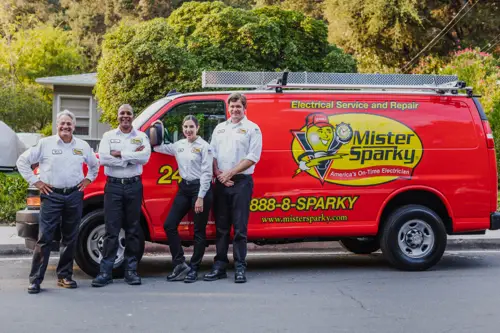How Long Does It Take to Install a Home Generator?
 You know what, I get the frustration of yet another power outage leaving you in the dark. It’s the worst, isn’t it? One minute you’re relaxing at home, the next everything goes black and you’re scrambling to find candles and flashlights. Ugh, the struggle is real.
You know what, I get the frustration of yet another power outage leaving you in the dark. It’s the worst, isn’t it? One minute you’re relaxing at home, the next everything goes black and you’re scrambling to find candles and flashlights. Ugh, the struggle is real.
If you’re like me, those recurring blackouts have finally pushed you to the point of saying “Enough is enough, I need a backup generator!” But I bet the big question on your mind is – how long does it take to install? As a fellow homeowner who values efficiency, I was super curious to find out.
Why Would I Even Want a Generator, Though?
Okay, let’s start with the basics. A generator is an insurance policy for your home when the power grid goes down. It takes mechanical energy and turns it into good old electricity, keeping the lights on and your appliances running during an outage.
And let me tell you, having that fail-safe can make a world of difference. No more frantic searches for candles, no more stressing about your fridge full of food going bad. Heck, for folks who rely on medical equipment, a generator can be a lifesaver.
Sure, it’s an investment you hope you’ll never have to use. But when the unexpected happens and the lights cut out, you’ll be so glad you’ve got that backup plan in place. The peace of mind alone is worth it if you ask me. But how long does it take to install
Getting the Prep Work Out of the Way
Before we can even think about getting that generator installed, there’s some important groundwork to lay. First up is choosing the right model for your home – you’ll want to consider factors like power output, fuel type, and your specific energy needs.
And don’t forget about permits and local regulations! Depending on where you live, you may need to jump through a few hoops to get the green light. That’s why it’s so crucial to work with a pro who knows the lay of the land. They can help you navigate all the paperwork and avoid any nasty surprises down the line.
Calling in the Cavalry
When it comes to actually installing a generator, this is not a DIY kind of job. You’re talking about complex electrical systems, and safety has to be the top priority. That’s why working with a licensed, experienced installer is so important.
These folks know all the tricks of the trade, from handling the technical aspects to ensuring everything meets local codes. And let me tell you, their expertise is invaluable when it comes to keeping your project on track and avoiding any unwelcome snags.
So how long does it take? Well, it can vary quite a bit, but you’re generally looking at anywhere from a few days to a couple of weeks, start to finish.
Breaking Down the Timeline: How Long Does It Take
The first step is the site assessment, which usually takes a day or two. Your installer will come in, check out your property, and figure out the best location for the generator. They’ll also take a close look at your electrical setup to make sure everything’s compatible.
Once that’s done, it’s time for the prep work. This involves getting all the necessary permits, setting up the installation site, and ordering any materials that might be needed. Depending on the complexity of your home, this phase can take anywhere from a few days to over a week.
And then finally, there’s the actual installation itself. The good news is that this part goes pretty quickly – most jobs are wrapped up in one to two days. Your installer will get that generator hooked up to your home’s electrical system, give it a test run, and make any final adjustments.
Factors That Can Throw a Wrench in the Timeline
Of course, there are a few things that can influence how long the whole process takes. The age and complexity of your home’s electrical system is a big one. Older houses may require some extra work, which can stretch out the timeline. Weather conditions can also play a role, especially when it comes to outdoor tasks like prepping that concrete pad for the generator.
And let’s not forget about supply chain issues – during storm season, a sudden spike in orders can lead to delays in getting the necessary equipment. The key is to be flexible and work closely with your installer. That way, you can keep your expectations realistic and avoid any unwelcome surprises.
Keeping Your Generator Happy and Healthy
Once your new power source is up and running, the work isn’t quite done. Regular maintenance is crucial to making sure it stays in prime condition and is ready to spring into action when the grid inevitably goes down.
Your installer can help you set up a maintenance schedule, covering the essentials like oil changes, battery checks, and general inspections. It’s a small investment of time and effort that pays off big when you need that generator the most.
So there you have it – the scoop on getting a generator installed in your home. It’s a process that requires some patience and coordination, but the payoff is peace of mind and a whole lot of light in those unexpected blackouts. Ready to finally take the plunge? Reach out to a trusted pro and let’s get you powered up!
